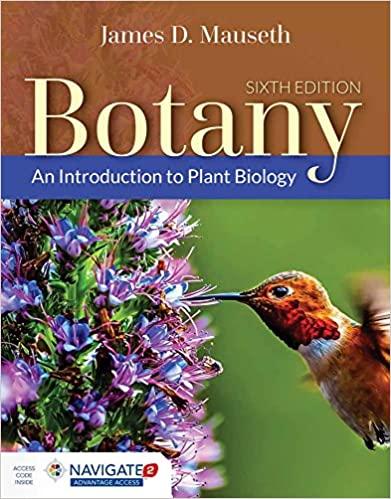Have you tried using the Plants and People Box 18-4 to key out plants? Couplet 6 is
Question:
Have you tried using the Plants and People Box 18-4 to key out plants? Couplet 6 is used to distinguish between beets and turnips and relies on a character that is very easy to assess. What character is it? Couplet 4 distinguishes between carrots, beets, and turnips, even though only carrots are mentioned in couplet 4. If the plant being identified is a beet, what do you need to do at couplet 4 and in the next steps? Onions appear twice—first in couplet 11 and then in couplet 13. Why might onions be confusing enough to need to appear in two different places?
Box 18-4
When a plant must be identified, it can either be sent to an expert who will recognize it immediately, or it can be identified using a key, like the one shown here. Most keys are constructed of pairs of choices (couplets). Start at the first choice, and determine which description matches your plant; at the end of each line, there is either the name of the species or a number indicating the next set of couplets to use. The first choices are usually quite broad and easy, such as whether the plant is woody or herbaceous; this divides the plants into two completely artificial categories. This is acceptable because the key is used only for identification, not classification. As you proceed through the choices, you finally come to a name, meaning that you have tentatively identified your plant. The key should be accompanied by descriptions of all the species and, if possible, drawings or photos. After arriving at the name in the key, you should turn to the description to see whether it matches.
In this key, I have incorporated only the most common plants found in grocery stores, so you may try to identify a plant that is not in this key. If the plant does not resemble any plant in this key, you will soon run into a couplet in which neither description seems appropriate. In real life, this could mean that you have discovered a new species or a known species growing in an area where it had not been known to exist.
Unfortunately, it most often means that you have made a mistake somewhere in the keying process.
Keys in floras or monographs usually are constructed in stages; a preliminary, small key identifies the plant to family or genus, and subsequent keys identify it further to species. As you go to each new key, you can check the description of the family or genus to see whether your keying has been correct to that point. With some experience and knowledge of the plants of an area, most people can recognize the family immediately and perhaps even the genus; therefore, they can skip the first keys and go directly to the appropriate level. The key shown here is really three keys: The first distinguishes between fruits and vegetables, and the other two are separate keys for fruits and vegetables;
most of you should be able to identify your specimen as a fruit or a vegetable without having to go through a key. On the other hand, mushrooms present a problem. You do not know how I would treat a mushroom-it is reproductive like a fruit but has not developed from an ovary or associated structure; you have to use the first key for peculiar specimens like this.
As you use the key, keep in mind that you may have selected a plant that is not available in my store, so it will not be in the key.
Step by Step Answer:






